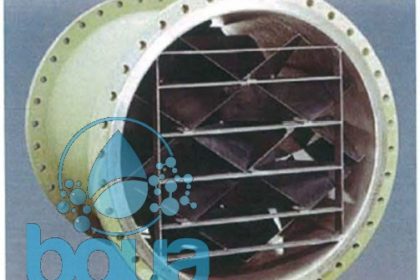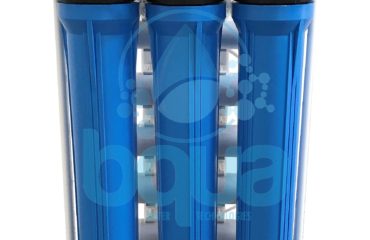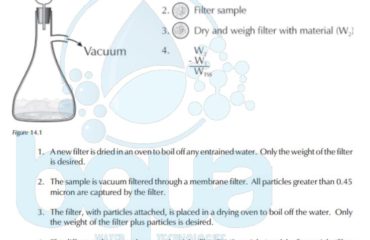
What is Coagulation Definition
Coagulation is simply the process that destabilizes colloidal particles so that they can come together to form larger, conglomerate particles. Low-pressure membrane technology is becoming significantly more prevalent in the drinking water industry. Low-pressure membranes are purely size-exclusionary devices. As a result, anything smaller than membrane pore sizes (approximately 0.01 to 0.1 micron) will pass through the membrane, Therefore, membrane feed waters with dissolved materials, such as organics and metals, require some form of additional treatment.
Often, in these cases, the most economical pre-treatment process is simple coagulation. Potential coagulants for membrane pre-treatment include those also used for conventional water treatment. Additionally, organic adsorption media such as PAC and MIEX, or oxidants such as potassium permanganate, chlorine, or chlorine dioxide can be applied upstream of a low-pressure membrane (assuming appropriate membrane compatibility) for enhanced dissolved material removal.
Similar to a direct filtration mode of operation for conventional technology, the goal of coagulation for membrane pretreatment is to produce a pinpoint floc that is capable of adsorbing dissolved matter, but minimizes solids loading onto the membrane filtration process. As noted briefly above, it is important to quantify membrane compatibility and performance with the coagulant of choice.
Each commercially available RO membrane utilizes different membrane materials. As a result, the compatibility and performance of a coagulant for membrane filtration pre-treatment will likely vary between membrane system and raw water supplies. As such, there are no specific guidelines for membrane system pre coagulation except the general guidelines that are associated with conventional treatment.
Coagulant Types
The coagulant most frequently used for membrane plant source seawater conditioning prior to sedimentation or filtration is ferric salt (ferric sulfate and ferric chloride). Aluminum salts (such as alum or polyaluminum chloride) are not typically used because it is difficult to maintain aluminum concentrations at low levels in dissolved form because aluminum solubility is very pH dependent. Small amounts of aluminum may cause mineral fouling of the downstream Seawater Reverse Osmosis membrane elements. In coagulation, coagulant dosage for a given source water should be determined based on jar test and/or pilot testing. The optimum coagulant dosage in a coagulation process is pH dependent and should be established based on an on-site jar or pilot testing for the site-specific conditions of a given application.
Overdosing of a coagulant used for seawater pretreatment is one of the most frequent causes for SWRO membrane mineral fouling. When overdosed during coagulation, coagulant accumulates on the downstream facilities and can cause fast-rate fouling of downstream cartridge filters following the pretreatment step and in iron fouling of the Seawater RO membranes. The effect of overdosing of coagulant (iron salt) on the SDI level can be recognized by visually inspecting the SDI test filter paper (Figure 6). In such situation, a significant improvement of source water SDI can be attained by reducing coagulant feed dosage or in case of poor mixing, modifying the coagulant mixing system to eliminate the content of unreacted chemical in the filtered seawater fed to the SWRO membrane system.
In line static mixer used in coagulation
The main purpose of the coagulation system is to achieve uniform mixing of the added coagulant with the source seawater and efficient coagulation of the particles contained the seawater. The two types of mixing systems most widely used in seawater desalination plant is in line static mixer and mechanical flash mixer installed in coagulation tanks. Although in-line mixers are simple and less costly, they have two disadvantages: (1) their mixing efficiency is a function of the flow rate; (2) static mixers are proprietary equipment and the project designer would need to rely on the equipment manufacturer for performance projections.
Static mixers also create additional head losses of 0.5 to 1.0 meters, which need to be accounted for in the design of the intake pump station. Another important issue is to provide adequate length of pipeline (at least 20 times the pipe diameter) between the mixer and the entrance to the pretreatment filters in order to achieve adequate flocculation. Mechanical flash mixing systems consist of coagulation tank with one or more mechanical mixers and chambers. The coagulation tank is designed for a mixing time (t) of 1 to 3 seconds and mechanical mixers that create velocity gradient (G) of 300 s, (optimum G x t = 500 to 1,600). The power requirement for the mechanical mixer is 2.2 to 2.5 horsepower/10,000 m3/day. This type of mixing usually provides a more reliable and consistent coagulation, especially for desalination plants with significant daily flow variations (i.e., more than 30 % of average annual production flow).



